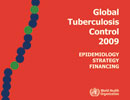
About 3 million people fail to access TB treatment under directly-observed treatment shortcourse (DOTS), according to the World Health Organization (WHO) Global Tuberculosis Control Report 2009 . Dr Mario Raviglione, Director of Stop TB Department of WHO, said to this correspondent that "more than one-third of all TB cases are not detected under DOTS. Some of these un-notified cases are never diagnosed." Either the poor access to TB services in some African settings or people accessing TB services in private settings in Asia contribute to these cases going un-notified. There is a clear thrust to scale up new TB case detection and successfully treating those diagnosed. "There are probably many more TB-HIV co-infection cases than we had previously thought", adds Dr Raviglione. "In 2007, out of the total 9.3 million TB cases, 1.4 million are due to HIV" says Dr Raviglione. According to the new report released on World TB Day (24 March 2009) at the 3rd Stop TB Partners' Forum in Rio de Janeiro, Brazil, out of 1.7 million TB deaths, half a million deaths are due to TB-HIV co-infection, which is double than the number of deaths attributed to TB-HIV co-infection last year (one out of four TB deaths is HIV-related, twice as many as previously recognized). This figure reflects an improvement in the quality of the country data, which are now more representative and available from more countries than in previous years. The report reveals a sharp increase in HIV testing among people being treated for TB, especially in Africa . In 2004, just 4% of TB patients in the region were tested for HIV; in 2007 that number rose to 37%, with several countries testing more than 75% of TB patients for their HIV status. Because of increased testing for HIV among TB patients, more people are getting appropriate treatment though the numbers still remain a small fraction of those in need. In 2007, 200,000 HIV-positive TB patients were enrolled on co-trimoxazole treatment to prevent opportunistic infections and 100,000 were on antiretroviral therapy. There is a clear mandate to accelerate collaboration between TB and HIV programmes at all levels. "The incidence of TB per capita continues to go down since 2004 however the decline is just one per cent per year which implies that we will not be able to eliminate TB for centuries" says Dr Raviglione. "We need to fully implement the Stop TB Strategy" stresses Dr Raviglione. The WHO Global Tuberculosis Control Report 2009 confirms the notion that there might be more than half a million multi-drug resistant TB (MDR-TB) cases every year. "54 countries have reported extensively drug-resistant TB (XDR-TB) to us" said Dr Raviglione. Bobby Ramakant (The author is a World Health Organization (WHO) Director General's WNTD Awardee 2008, coordinates the global Stop-TB eForum Resource Team of HDN and writes extensively on health and development. Email: bobbyramakant@yahoo.com )
|
|


Comments: